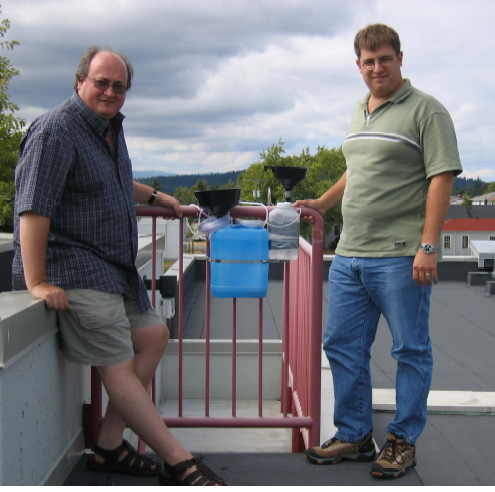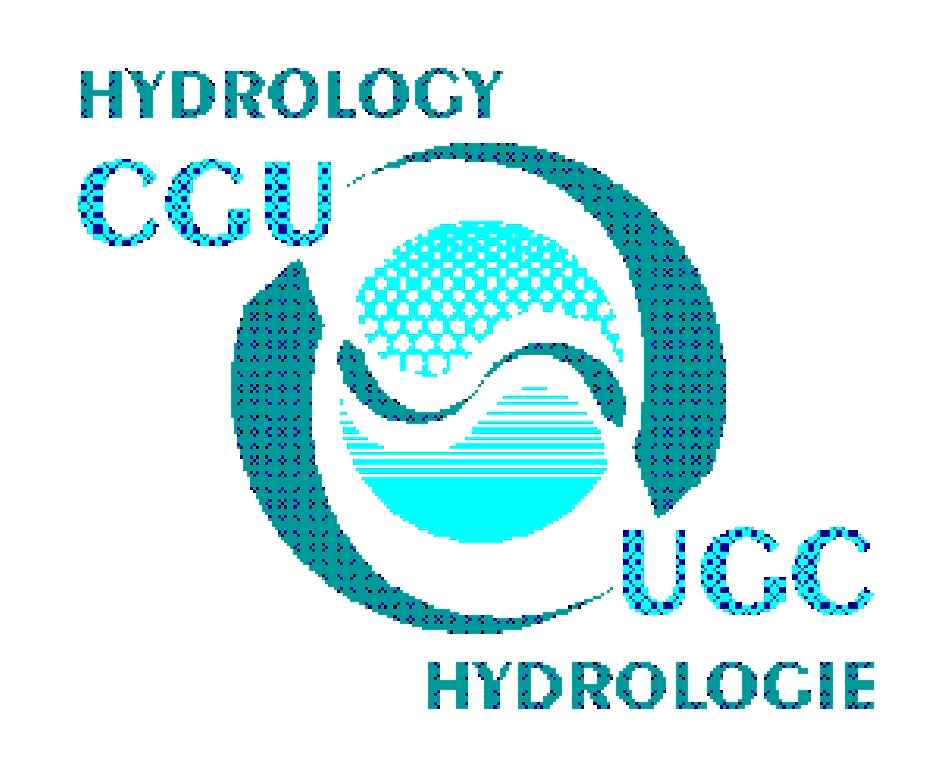Canadian Network for Isotopes in Precicpitation (CNIP) Subcommittee
Visit the CNIP Home Page at the University of Waterloo
One fundamental limitation of isotope hydrology and paleoclimate studies in Canada is the lack of a national program for collection of isotopes (18O, 2H and 3H) in precipitation. This issue was at the forefront of discussions at a recent Canadian workshop entitled " Water and Climate Studies in Canada using Isotope Tracers: Past, Present, Future" held at the University of Waterloo, Waterloo, Ontario, 31 January - 01 February 1997. The meeting culminated in a resolution of the participants to pursue the formation of a CGU-HS CNIP subcommittee to formally address the issue.
The CGU-HS CNIP subcommittee was formed in 1997. The initial aim of the Committee has been to assemble a slate of members to represent a broad cross-section of the hydrology research community. Hydrology within the context of the CGU is defined as "the geophysical science concerned with physical and geochemical processes intrinsic to the cycling of continental waters. It deals with the properties of water, its transport and storage in solid, liquid or vapour form in the Geosphere, and with the influence of biological and human activity on these forms of water in the Biosphere".
Objectives and Activities
The proposed objectives of the subcommittee are to:
articulate the research needs of Canadian and international scientific programs employing isotope tracers
prepare and distribute an articulated document outlining formal scientific objectives and recommendations for a Canadian ‘isotopes in precipitation’ network as a formal long-term contribution to GNIP (Global Network of Isotopes in Precipitation), jointly operated by the IAEA (International Atomic Energy Agency), IGBP-PAGES (International Geosphere Biosphere Program-Past Global Changes), WMO (World Meteorological Organization), IAHS and other national networks
to present the document to government hydrometeorological network representatives for discussion
to appoint CNIP Subcommittee representatives to sit on a "CNIP steering committee" with government hydrometeorological network representatives
to oversee and re-evaluate priorities and scientific objectives of CNIP on an ongoing basis
Members
Jean Birks (Chair), University of Waterloo, Waterloo ON
William Buhay, University of Winnipeg, Winnipeg MN
G. Glenn Bursey, Fracflow Consultants, Dartmouth NS
Ian Clark, University of Ottawa, Ottawa ON
Tom Edwards, University of Waterloo, Waterloo ON
Larry Flanagan, University of Lethbridge, Lethbridge AB
John Gibson, National Water Research Institute, Victoria BC (President IAHS International Commission on Tracers)
Kaz Higuchi, Atmospheric Environment Service,Downsview ON
Claude Hillaire-Marcel, GEOTOP-UQAM, Montreal QC
Roy Krouse, University of Calgary, Calgary AB
Fred Longstaffe, University of Western Ontario, London ON
Fred Michel, Carleton University, Ottawa ON
News
New Station: Researchers at the Water and Climate Impacts Research Centre at the University of Victoria started sampling monthly precipitation samples in 2004. This data will eventually be contributed to CNIP.
Webpage Update: The CNIP website was updated in Oct. 2004 and now includes 1997-2003 data for active stations.
Sampling: Operation of CNIP continued during the past year, with sampling conducted by the Meteorological Service of Canada and analyses supplied by the Environmental Isotope Laboratory, University of Waterloo. Close cooperation with the IAEA/WMO/IGBP Global Network for Isotopes in Precipitation program was maintained, with Canadian representation on the GNIP Scientific Steering Committee provided by T. Edwards (University of Waterloo). Significant advances were made in the characterization and depiction of both Canadian and global isotope data through collaboration between the International Atomic Energy Agency and University of Waterloo, leading to joint electronic publication of the IAEA/UW GNIP Maps and Animations (see Birks et al. 2002). Detailed analysis of the complete monthly data series from the first eight years of CNIP operation (1997-2004) is underway.
MNIP: The Manitoba Network for Isotopes in Precipitation (MNIP) is currently being developed by the University of Winnipeg in cooperation with teachers and students in Manitoba elementary and secondary schools. The objective is to collect precipitation samples for isotopic analysis on a monthly basis to provide a dense network of stations for all populated areas of the province. Results and interpretations are to be disseminated on a web page and made available for student projects. For more information please contact Danny Blair or Bill Buhay, Department of Geography, University of Winnipeg (d.blair@uwinnipeg.ca or b.buhay@uwinnipeg.ca.
Comments and inquiries should be directed to: sjbirks@uwaterloo.ca

John Gibson and Jean-Francois Helie at the new CNIP station located at the National Water Research Institute, Victoria BC.
